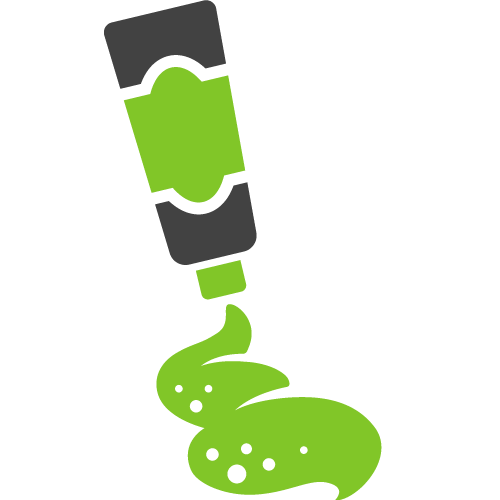
This article is an event report of the online seminar "Realizing a "Real WASABI" (Japanese Wasabi) Plant Factory! Where is AgriTech?"
Speaker profile
Mr. Asamori Sakuma / NEXTAGE Co., Ltd.
After returning from studying in the United States in 2003, he has consistently engaged in service planning, development, and management in the web/ digital domain.
Before his current position, he was in charge of promoting a hit app game and implemented various measures.
Joined NEXTAGE Co., Ltd. in October 2018 and participated in a plant factory project where he felt that his knowledge of the digital domain would be useful.
We are striving towards the social implementation of “mobile agriculture” through wasabi plant factory cultivation.
Shunsuke Kobayashi/ Macnica
Engaged in DX/AI business development support and product development PM.
He has experienced consulting for 50 companies in the manufacturing, construction, education, finance, and sports industries, and is currently promoting DX consulting for smart agriculture and in-house product development.
From the experience cultivated in various industries, I am good at UX design from acquiring customer insights.
Current status of Japanese wasabi
The seminar started with a lecture by Mr. Sakuma of NEXTAGE.
First, we share the reality of what kind of wasabi is consumed in Japan.
Did you know what kind of wasabi they eat?
| Product type | raw materials | eating part | taste | efficacy |
|---|---|---|---|---|
raw wasabi |
real wasabi | rhizome |
mild pungent taste refreshing scent |
can be. The rhizome of this wasabi contains a substance that has a strong ability to activate detoxification enzymes, and is expected to be effective in preventing carcinogenesis. |
tube wasabi |
Use of genuine wasabi: More than 50% of raw materials used wasabi Contains genuine wasabi: less than 50% of raw wasabi used |
Horseradish. Although this wasabi includes rhizomes, roots, leaves, and stems are mostly used. |
Pungent | none |
powdered wasabi |
Horseradish + mustard powder *Does not contain real wasabi |
Horseradish | strong pungent taste | none |
We usually eat wasabi, but Mr. Sakuma says that surprisingly few Japanese eat real wasabi.
Most tube-shaped wasabi distributed in Japan use the roots, leaves, and stems of this wasabi, which is classified as being eaten raw.
In other words, even Japanese people rarely have the opportunity to eat hon-wasabi, which is classified as being eaten raw.
So why are we in this situation?
There are various reasons such as reverse import of overseas wasabi, outflow of seedlings, changes in the production environment, aging of producers, etc., but the current situation is that the amount of production is overwhelmingly insufficient to meet the demand. .
Knowing this situation, if things continue as they are, the continuation of the cultivation of Japanese wasabi (Real WASABI), which is one of Japan's endemic species and is recognized around the world, is in danger. Based on this feeling, the company decided to focus on the wasabi factory cultivation business.
Approach to recovery of Japanese wasabi production
In addition to producing wasabi in-house, what is necessary is to expand that circle.
The company's mission is to create an environment where anyone can grow wasabi regardless of location, and is working to restore production.
Wasabi Cultivation Issues
I will share the issues with three examples of Japanese wasabi cultivation methods.
| Cultivation method | outdoor cultivation | Simple facility cultivation | Plant factory |
|---|---|---|---|
| Cultivation place | Along rivers in the mountains | farmland, etc. | close to consumption area |
| cultivation period | 1 to 2 years | 1 to 2 years | 1 year |
| workload | big | big | small |
| Cultivation water | need a lot | need a lot | small amount |
| Task | Difficulty in developing new fields | Requires a large amount of spring water, etc. | Facility and electricity costs are incurred Absence of plant factory cultivation engineers |
As shown in the figure, the current state of wasabi cultivation is that even if we try to cultivate it under different conditions, we still face major challenges in terms of new development, maintenance, and cost.
Still, why do you focus on wasabi plant factories?
One of the merits of plant factories is that the work and management burden on personnel, such as environmental management using technology, is small. This is a great advantage in wasabi cultivation, where the workforce is aging.
In addition, in the case of outdoor cultivation or simple facility cultivation, it takes up to two years before cultivation is possible.
In Japan, where climate change and abnormal weather occur frequently, the risk of going through two summers is great.
On that point, Mr. Sakuma says that the plant factory can be cultivated in about a year in a stable climate, so it has an advantage from a comprehensive point of view compared to other cultivation methods.
why use technology
Although there are advantages compared to other cultivation methods, the use of technology does not necessarily mean recovery of production. Nonetheless, there are significant benefits to managing environmental data and the like with technology.
For example, lettuce and other plants that have already been used in plant factories can be harvested relatively quickly, taking only about 30 days to grow. Therefore, even if there is a change in the environment inside the factory, the error in the growth rate will be contained within a few days.
However, wasabi takes two years in the open field and about one year in the factory, so it can be said that the difference in harvesting time due to environmental changes can be about one year depending on the individual, which is a big loss.
Therefore, real-time measurement using technology and daily kaizen are necessary to eliminate individual errors as much as possible and achieve stable production volume.
What technology do you use
Mr. Sakuma explained his approach at a wasabi plant factory, and in the second half he gave a lecture on Macnica 's image processing services for the food agritech business.
There are high hopes for plant factories as an approach to solving global food issues, but currently most of the produce produced there is lettuce.
Furthermore, the reality is that only about 20% of plant factories are able to turn a profit, says Kobayashi of Macnica.
So, how can a plant factory become profitable? The clue to this is the cultivation of a wide variety of plants that produce "high added value," such as NEXTAGE 's wasabi.
In order to realize the profitability of such plant factories, we provide a "growth data visualization system" by utilizing AI, IoT, and sensing, which are Macnica 's specialties.
Cultivation planning support service provided by Macnica
The cultivation planning support service provided by our company mainly enables the acquisition of plant environmental data and image judgment of the growth state using a camera.
This makes it possible to check the growth state from data such as plant size, color, leaves, and leaf density.
By using this data, for example, it is possible to detect plant diseases at an early stage by discerning the color of leaves. becomes possible.
It can also be used for cultivation recipe research, such as AB testing of growth conditions. For example, it is possible to compare the growth conditions in an environment with a temperature of 15 °C and the growth conditions in an environment with a temperature of 20 °C, and use it for the optimal cultivation plan.
By utilizing these technologies, we will break away from the dependence on cultivation planning for difficult-to-cultivate plants.
Customization = Flexible development environment that does not increase development costs
Currently, the cultivation planning support service is customized for NEXTAGE 's wasabi cultivation, but Kobayashi says that it can be used for other plants as well.
Originally, if plants and environments are different, custom-made development is required, and development costs and development periods are usually enormous and lengthy.
However, the “cultivation planning support service” provided to NEXTAGE was implemented in about two to three months, and we have succeeded in significantly reducing development costs.
The secret is the track record of past 350 AI social implementations.
We have succeeded in reducing the development period and cost by combining and diverting various technologies that have been implemented so far.
In fact, the image recognition model used for this "cultivation planning support service" uses an algorithm created to detect golf balls.
In addition, as a semiconductor trading company, we are familiar with electronic devices around the world, so we have soil that can provide total solutions such as various sensors for plant factories, LED lights suitable for growing, and equipment that suppresses the growth of mold. Kobayashi of our company says that this is the secret to being able to provide services in a short delivery time.
Summary
I will summarize the contents of this lecture.
- The Reality of “Wasabi” Distributed in Japan and Entered Our Mouths
- Technology utilization to apply difficult-to-cultivate plants to plant factories
- Acquiring growth data through Macnica 's "Cultivation Planning Support Service"
- There is a flexible development environment that can be diverted to plants other than wasabi
During the Q&A time after the lecture, various questions were asked. (Excerpt)
- How do you plan to deal with the time lag between real-time and evaluation?
- Are you taking measures to prevent the theft of seeds and seedlings of high-end foodstuffs and other overseas outflows?
- Regarding the taste of wasabi, does it taste different between outdoor cultivation and plant factory? Also, how much can the defect rate in outdoor cultivation be improved at the factory?
- When we think of a food factory, we tend to think of it as a “factory,” but is it possible to reuse vacant houses and closed schools?
We also answer many of your other incisive questions.
the Q&A cornerPlease check the archived video for details of .